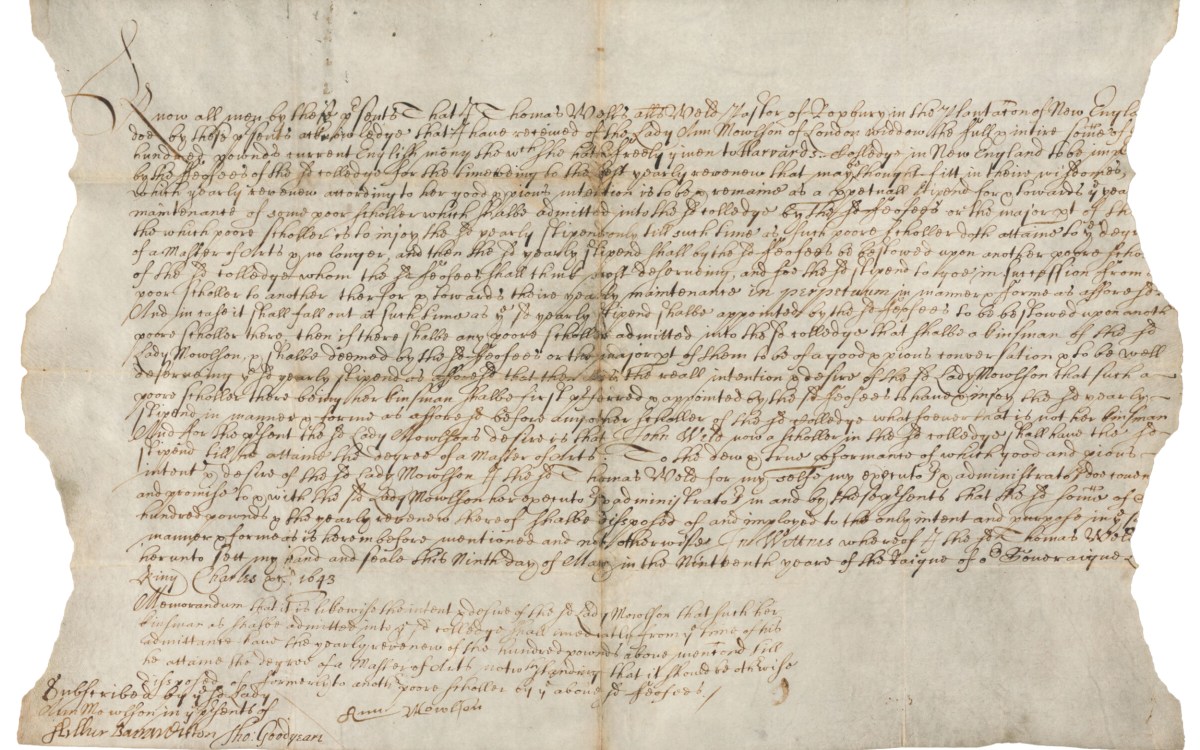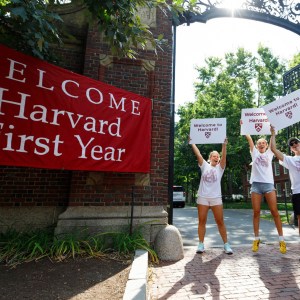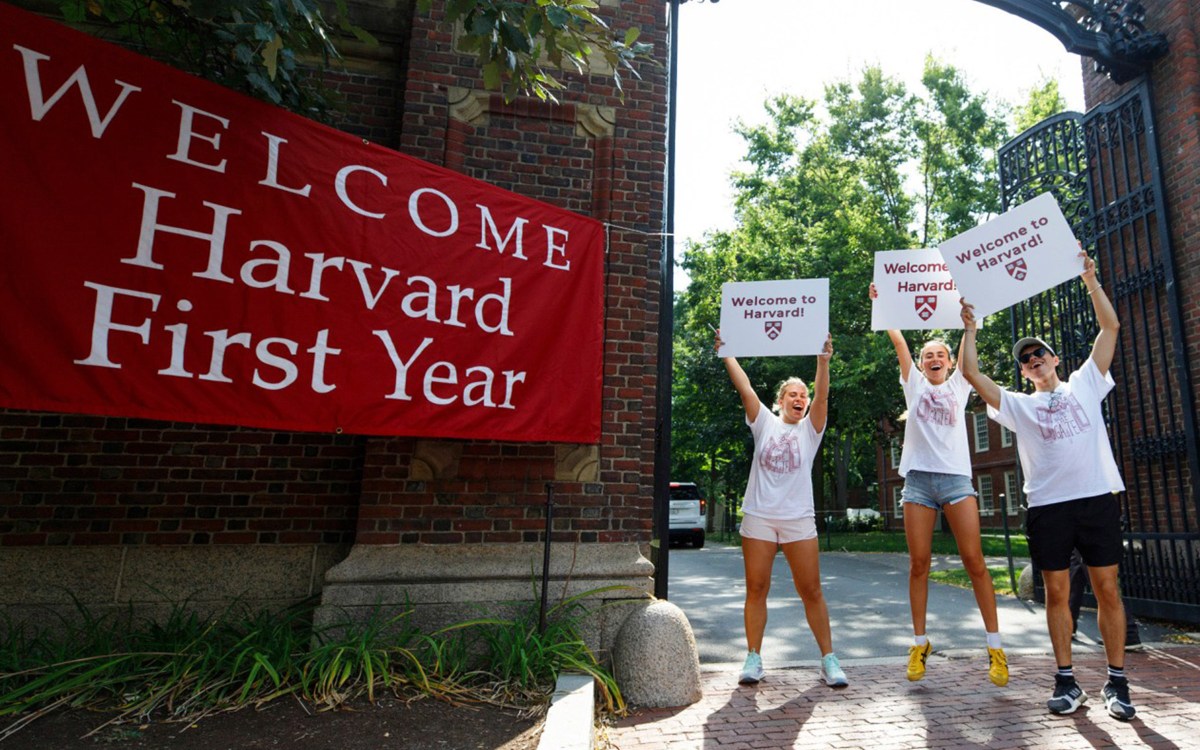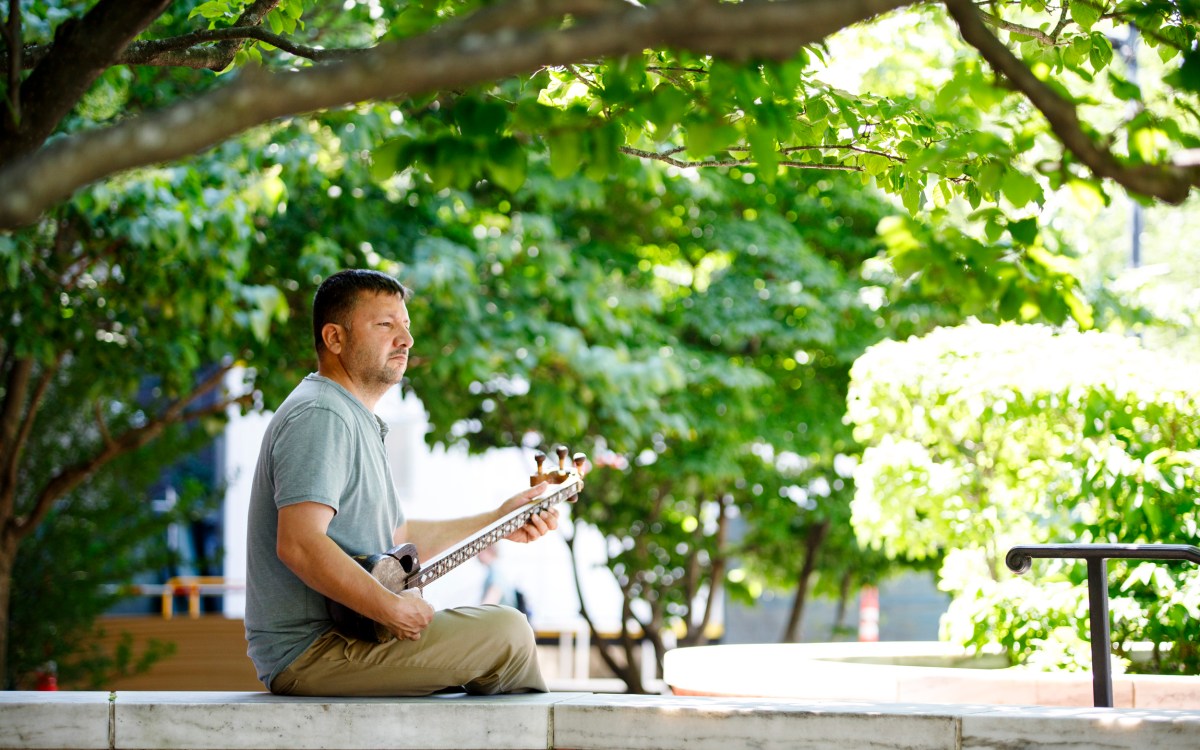Laura Clancy and the poetry of giving
Laura Clancy can’t tell you how she fills her pre-summer days. The best way she has to describe it is “a blur of so many random things.” But what else can you expect from someone who is gearing up (as she does every spring) for a seven-week summer program for 700 urban children at 12 sites across Boston and Cambridge? And that’s in addition to her continuing responsibilities as president of the Phillips Brooks House Association (PBHA), which runs most of the University-affiliated public service programs involving more than 1,800 undergraduates.
Her commitment has earned her notable attention, illustrated by a small gallery of awards, including this year’s Women’s Leadership Award.
Clancy, who grew up outside Philadelphia, was already active in a PBHA after-school program before launching her full-throttle involvement in the summer of 2000 as a camp director for the PBHA-affiliated Summer Urban Program. When offered a choice of camps, she made her decision based on “which one was the least likely to have someone else interested in directing.” She ended up at Native American Youth Enrichment Program (NAYEP) in Jamaica Plain because, she theorized, when people think of urban ethnic populations, “Natives” often are not the first to come to mind. She embarked on the summer expecting at least some degree of cultural tension between her and the campers and their families, but found the experience to be “idyllic,” a much-welcomed climate change after a grueling semester.
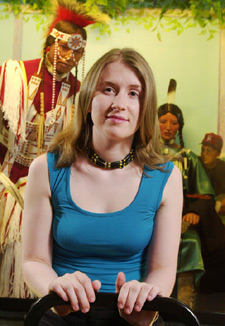
“I was very burned out the semester before I started directing NAYEP. I had been working very hard. At the time, my concentration was history and science – that wasn’t a very wise choice on my part for a major. Now I’m [in] English and I like it much better. I was doing all nonpublic service stuff. It was not at all rewarding. And I was working really hard. I felt really isolated, like I hadn’t really found my community at Harvard yet.”
As the intensity of the semester faded during the busy but rewarding summer, she found the clarity to decide to take the fall (2000) semester off. Precisely how to spend that time didn’t take long to figure out. The day after a few investigative phone calls, she was on a plane to the Cheyenne River Sioux reservation in South Dakota. Unfazed by the U.S. Census’ finding that the reservation has the fourth-lowest per capita income in the United States as well as racial tensions with bordering communities, she spent the next five months working at “Main,” the reservation’s youth center.
Beyond it being an occasion to immerse herself in work with a population to which she had devoted her summer, Clancy jumped at the opportunity to take the Western sojourn because of Main’s reputation for being top-notch in its league in terms of its solid funding base, programming, and community relations.
Clancy’s drive seems fueled less by a particular academic interest or political motivation than by a combination of compassion and sociocultural fascination. “Here’s a society where our notion of success for them is totally at odds with their idea of success. It’s a totally unsolvable thing. If you’re a kid and you watch TV, you learn – through the messages of your, or a, culture – that your worth is tied up in your material things. You obviously don’t feel very good about yourself if you’re living in a crappy trailer with no heating – and you don’t even own a coat! You wear three sweatshirts all the time instead,” she says.
Her contribution to the Main didn’t end when she left. Back at Harvard, she harnessed the resources to make a continuing impact. Last Christmas, Clancy was able to pack a van full of warm coats and toys that she amassed by tapping into the University-wide holiday drive. Then she and her NAYEP co-director, Mike Schultz ’02, took a weeklong expedition to deliver the goods.
Clancy appears to have gotten as much from her experience as she gave. “For the most part they do their own grant writing [on the reservation],” she says. “I learned a lot that I brought back to NAYEP for my second year of directing. I had relationships with some of [the Main’s] funders who ended up funding NAYEP.” She also draws from that toolbox of skills as she leads PBHA. As president, she chairs the board of trustees, which is comprised of faculty, community members, and students; leads the 25 student officers; and chairs the cabinet of student directors of the 82 PBHA programs. Given the meetings to be run, the letters to be written, and the fundraising to attend to, it’s little wonder that it takes great effort to find time for another passion: writing poetry.
It’s especially tough because, she says, poetry takes “complete lack of distraction.” But nevertheless, the art has been “the reason why I survived academically,” she adds. Clancy’s taken a writing workshop every semester since sophomore year.
Clancy will walk with her class at Commencement, but she has one more semester to complete. As for what’s to come after that, she offhandedly mentions several job offers from local foundations with which she has interned but, she says, “I have to decide if my talents best intersect with the service community or the giving community. I think a major problem in nonprofits is that nobody has figured out how to make Americans give to the right places in amounts that are meaningful and in ways that will support nonprofits.”
Her penchant for careful assessment when it comes to channeling her skills comes from her father, a pediatric neurologist. “My dad has an incredible work ethic,” she says, “That’s all it takes to be successful in almost anything. It’s not just working hard but having the right attitude about things and putting it all into perspective.”
